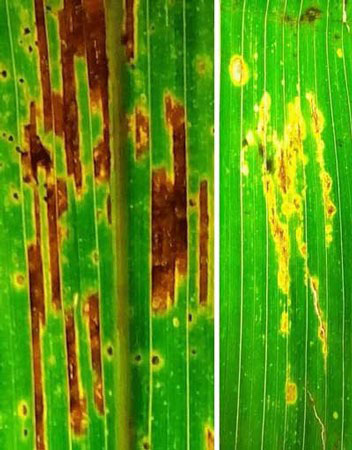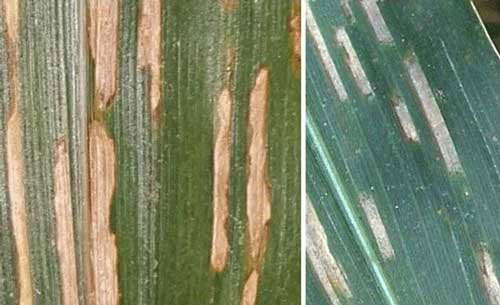Bacterial leaf streak was identified as a new corn disease in the U.S. in 2016. For this growing season, bacterial leaf streak disease has been confirmed in several locations across the state, including northeast Kansas.
While yield loss potential for this disease remains unknown, we do know that it can be misidentified as gray leaf spot, resulting in unwarranted fungicide applications. In the early stages of infection, symptoms can appear similar to gray leaf spot. Fungicides will not have any effect on bacterial leaf streak.
An easy way to identify the two diseases is to backlight the leaf with the sun (Figure 1). Light passes more easily through the bacterial streak lesion (translucent) causing it to look a brighter yellow-green color. Light does not readily pass through a gray leaf spot lesion (opaque), giving it a much darker appearance. Also, gray leaf spot typically has very sharp edges defined by the leaf veins, whereas bacterial leaf streak lesions will have a wavy edge that can cross the leaf vein (Figure 2).

Figure 1. Gray leaf spot lesions (left) have an opaque appearance, while bacterial leaf streak allows light to pass through more easily, giving it a translucent appearance (right). Photo by D. Jardine, K-State Research and Extension.

Figure 2. Sharp-edged gray leaf spot lesions (right) are compared with wavy-edged bacterial streak lesions (left). Photo courtesy of the University of Nebraska.
Rodrigo Onofre, Row Crop Pathologist
onofre@ksu.edu